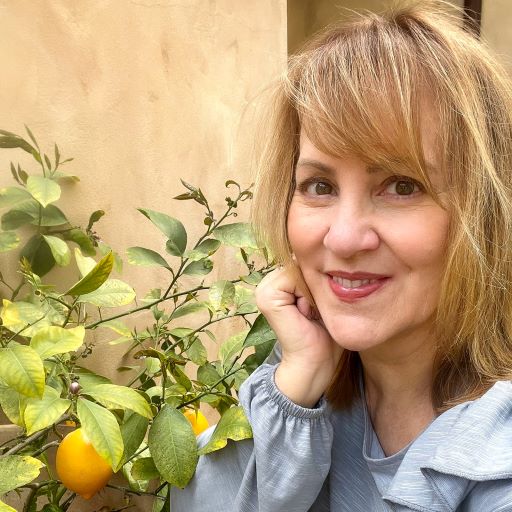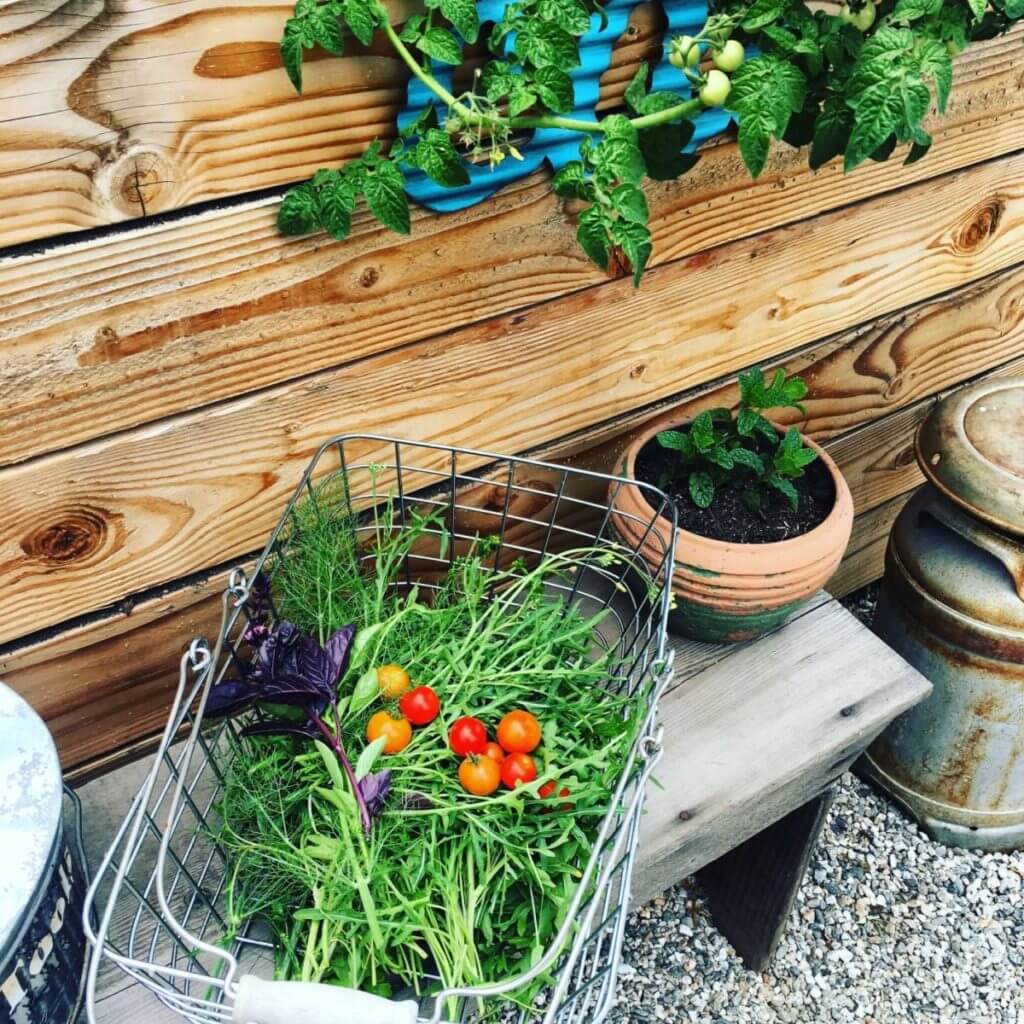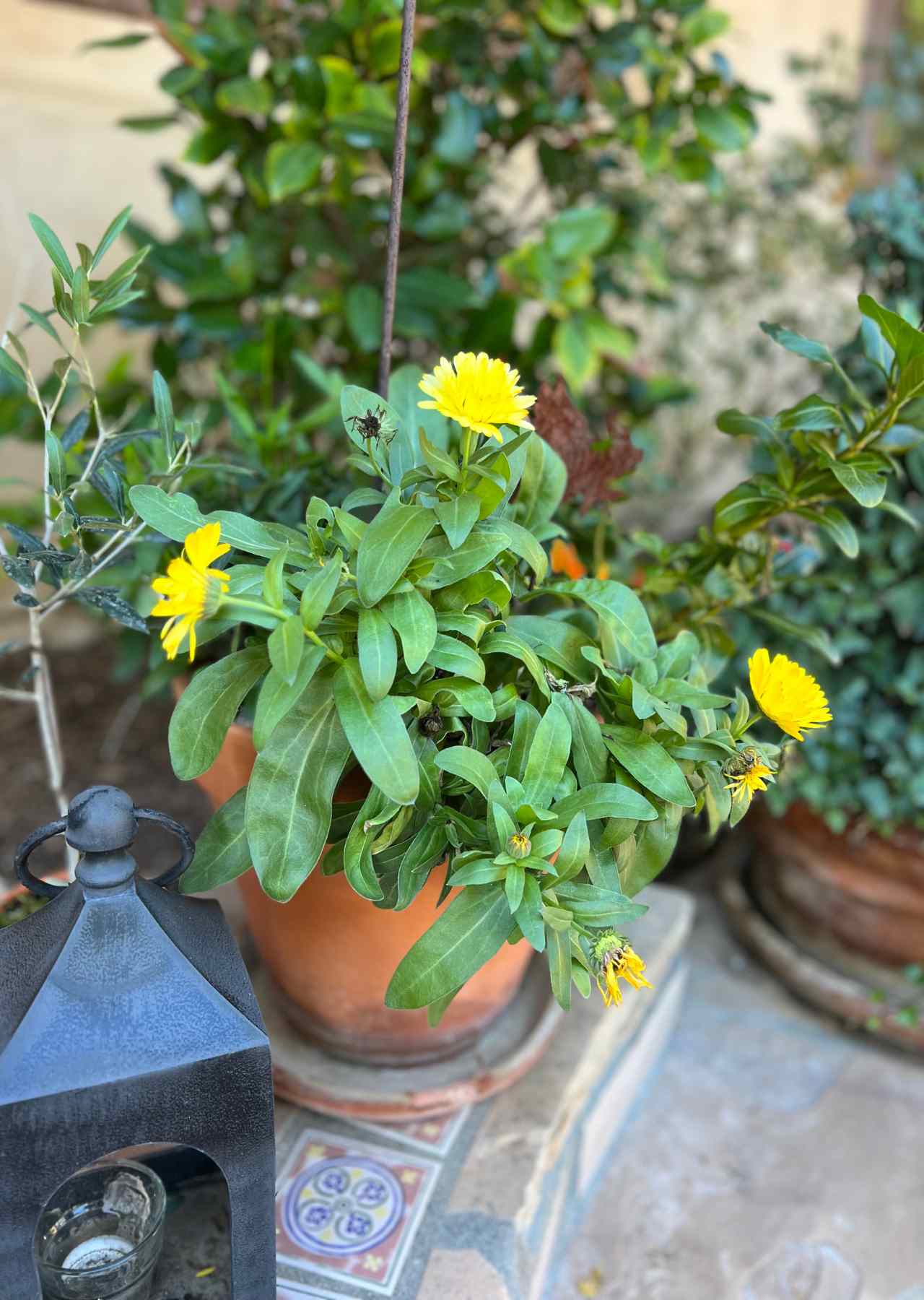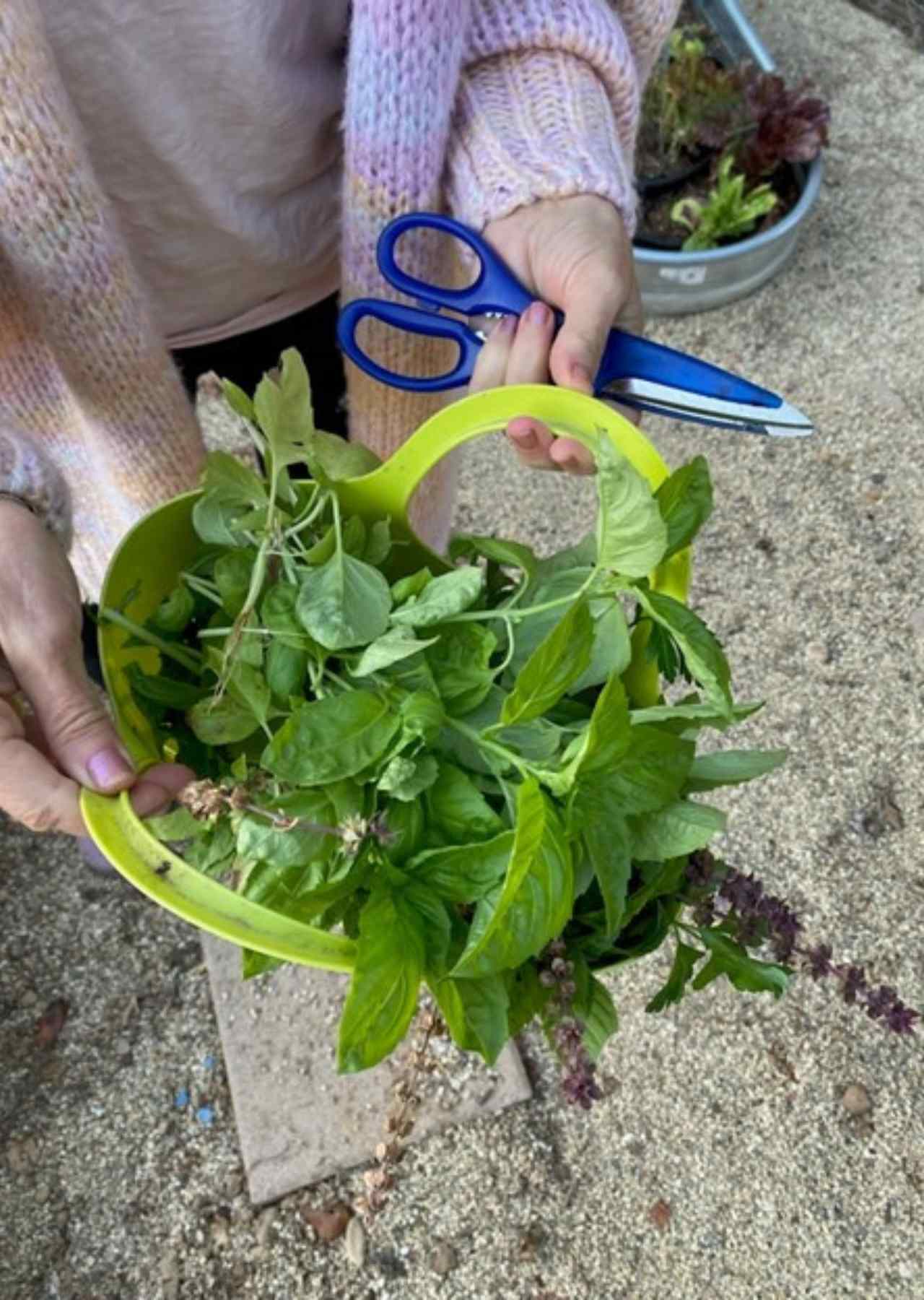Use Container Gardening to Create a Small Vegetable Garden

Want to grow a small vegetable garden but limited on yard space? Container gardens are great strategies for small backyard vegetable garden ideas. Try a container vegetable garden as a simple solution for growing easy access herbs, vegetables, and fruit this season.
At the first teases of spring—morning bird chatter in the warmth of an earlier risen sun, emerald cover on the Sulphur mountains out my kitchen window, fledgling new shoots and colorful blooms—I think vegetable garden! I seriously get giddy with the anticipation of going outdoors and absorbing the splendor of the spring season by planting a small vegetable garden. From making my wish list of herbs, vegetables, and fruits to plant, heading to my community garden center to grab seeds, seedlings, and soil, and then digging into the dirt beneath a blue sky, I love it all!

This year, I’m creating more container small vegetable gardens. My larger backyard vegetable garden and small orchard in Ojai will always have my heart, but I’m so loving this little flirtation with growing edibles in pots and other smaller containers. The plan is to have my pots and containers closer to me. Why not grow my spring herbs right outside my kitchen door so I can snip a sprig of thyme or basil on a whim as I’m cooking? Grow them in pretty, decorative pots or a rustic wine barrel and they’re instant seasonal décor—pretty and functional.
Feeling inspired? Container gardening for small vegetable gardens is one of the best ways to grow a garden, and it’s ideal for beginners, small spaces, and minimal time, effort, and cost. Even if you have the yard space, container gardens showcase the beauty of edible gardening. From trees like lemons (I have them at my front door), oranges, and olives in larger pots, to herbs like thyme and rosemary in smaller herb pots, to edible flowers like lavender, nasturtium and calendula in pretty floral pots, to powerful veggie producers like tomatoes, kale, and chili peppers in wooden containers, there is just so much vegetable gardening you can do on a smaller scale. The versatility, variety, ease, creativity, and straight up beauty of a container garden are perks to the biggest reason to start one—a homegrown harvest of healthy, delicious springtime fruits, veggies, and herbs.

Top Reasons to Create a Small Vegetable Garden
Grow Plants Anywhere
Windowsill, balcony, front walkway, rooftop, indoors—as long as there’s adequate light, a water source, and occasional food, you can have a container garden.
It’s Easier
Container gardens are no-fuss compared to in-ground gardens: No weeds, fewer pests to fend off, less disease from soil, easier to fertilize and water in a small space and scale, and they take less time and effort.
Homegrown Food
A tiny window box of basil, a hanging basket or strawberries, a 5-gallon tub of tomatoes—food is always fresher and tastes better when you grow it yourself.
It’s Healthy
Time outdoors, vitamin sunlight, and physical activity make gardening healthy for body and mind. Recent research suggests there are mental health benefits from working with plants, even for people who have never gardened before.
They Look Amazing
Decorating with plants is always in style. Your edible garden can dress up any space not only with nature’s beauty, but with a variety of pots and containers that can fit any aesthetic, from fun and cute, woodsy and practical, to elegant and chic.
A Sustainable Step
Growing your own food is one of the best things you can do for the planet. Even small steps make a difference, plant by plant.

Get Ready to Grow!
Location
As long as you have a space with adequate sunlight: windowsill, hanging basket, balcony, patio, you’re set to get started. Ideally, your space will get full sun 6 to 8 hours a day, which is necessary for fruiting plants like tomatoes, squash, or peppers. Herbs and leafy greens like lettuces and spinach can thrive with less, 3 to 5 hours of sun per day. Consider your water source in your space. Proximity to a hose is convenient, but a watering can will work just fine, assuming pot sizes and numbers are small scale. As temps rise, you could be watering once, if not twice, a day. (If soil feels dry an inch down, it’s time to water.)


Choosing Containers
Pots, tubs, and containers may be ceramic glazed in a variety of colors and designs, terra cotta, plastic (opt for food grade plastic so they don’t leech into your edibles), wood, cement, metal, and fabric. Consider cost, weight, durability, and size. For example, plastic containers are light weight, inexpensive, but not very durable, whereas terra cotta and ceramic pots are pretty, but are breakable and can be pricey. Reuse containers you already own or look for used or seconds to keep costs down. You can also upcycle most anything that can hold soil into a container: wheelbarrow, wagon, bathtub, basket, bucket, hanging basket, window boxes, old boot—let your imagination soar! Most vegetables need at least 12 inches of soil to grow well, but some, like tomatoes, need a 5- to 10-gallon pot. Be sure your container has a water drainage hole in the bottom, and consider plant saucers or something to collect drainage if you want to protect the surface beneath the container. Whether you go with a fun, eclectic mix or a uniform, matched collection, give your container garden decorative character that reflects your vibe.

Dirty Details
Soil from the yard or garden is not well suited for containers, as it’s too dense and heavy and may be prone to disease and pests. Instead, go soilless with potting mix, which is specially formulated for use in containers. It’s lightweight for better drainage and aeration, and should be free of disease and pests. Potting mix might contain a combination of sand, compost, sphagnum moss and peat, coir, perlite, vermiculite, or pine bark. They’re readily available at garden centers, or you can mix up your own using a recipe (you can find them online) that suits the type of plants you’re growing. It’s a good idea to mix organic fertilizer or compost (make your own by checking out my gardening toolkit) into your potting mix or add it on top just after planting. Then, feed your container plants with organic fertilizer or compost at least a couple times a month to add nutrients. I like to use compost, which I make at home, but you can also purchase it.

Picking Plants
Planting from seed is less expensive and offers lots of variety. But, it takes more time and care. Seedlings are easier because they’ve already got a good start, but they cost more. Herbs like basil, thyme, rosemary, and sage are among the easiest plants to grow in containers. Leafy greens like spinach and lettuces grow well too. Tomatoes are always a summer favorite! Keep in mind that fruit trees do really well in pots, too. I have lemons, oranges, and avocadoes in pots that produce fruit each year. If you live in a cooler climate, you can move those pots in doors if need be. Really, most any fruit or veggie can be grown in a pot as long as it has enough space and ideal growing conditions.
Growing conditions will determine when you start planting. Where you live matters when it comes to timing. In sunny SoCal, I am close to planting because we’re starting to get long hours of sunlight on a regular basis. Wait to plant until your temps are done dipping into freezing and your sunlight is predictably consistent. When shopping for seeds, the package will tell you the best conditions to plant. For seedlings, the local garden center is selling those that are ready to plant where you live.
No matter how new to gardening or how tight your space, you can do this! Start with one pot, and add more as you like. I’m so excited to embark on my own pot pourri of edible goodness. Grab the Container Garden Shopping List, below, and let’s get started together. It won’t be long before we’ll be enjoying our most loved springtime garden-to-table recipes prepared with homegrown container garden goodness.

Container Garden Shopping List
- Containers with drainage holes and any accompanying saucers or stands
- Potting mix and organic fertilizer and/or compost
- Hose or watering can
- Hand trowel
- Small gardening scissors or pruners for trimming and harvesting
- Gardening gloves
- Seeds and/or seedlings or starter plants
- Basket or container to gather trimmings and harvests

Learn more by checking out my free home gardening toolkit here.
For some of my favorite recipes that feature produce from a home garden, check out:
French Green Lentil Salad with Cherry Tomatoes
Thai Carrot Mint Salad
Blood Orange Hazelnut Kale Salad
Pomegranate Avocado Quinoa Salad
Herb Grilled Vegetables
Written by Lori Zanteson for Sharon Palmer
Photographs by Sharon Palmer


